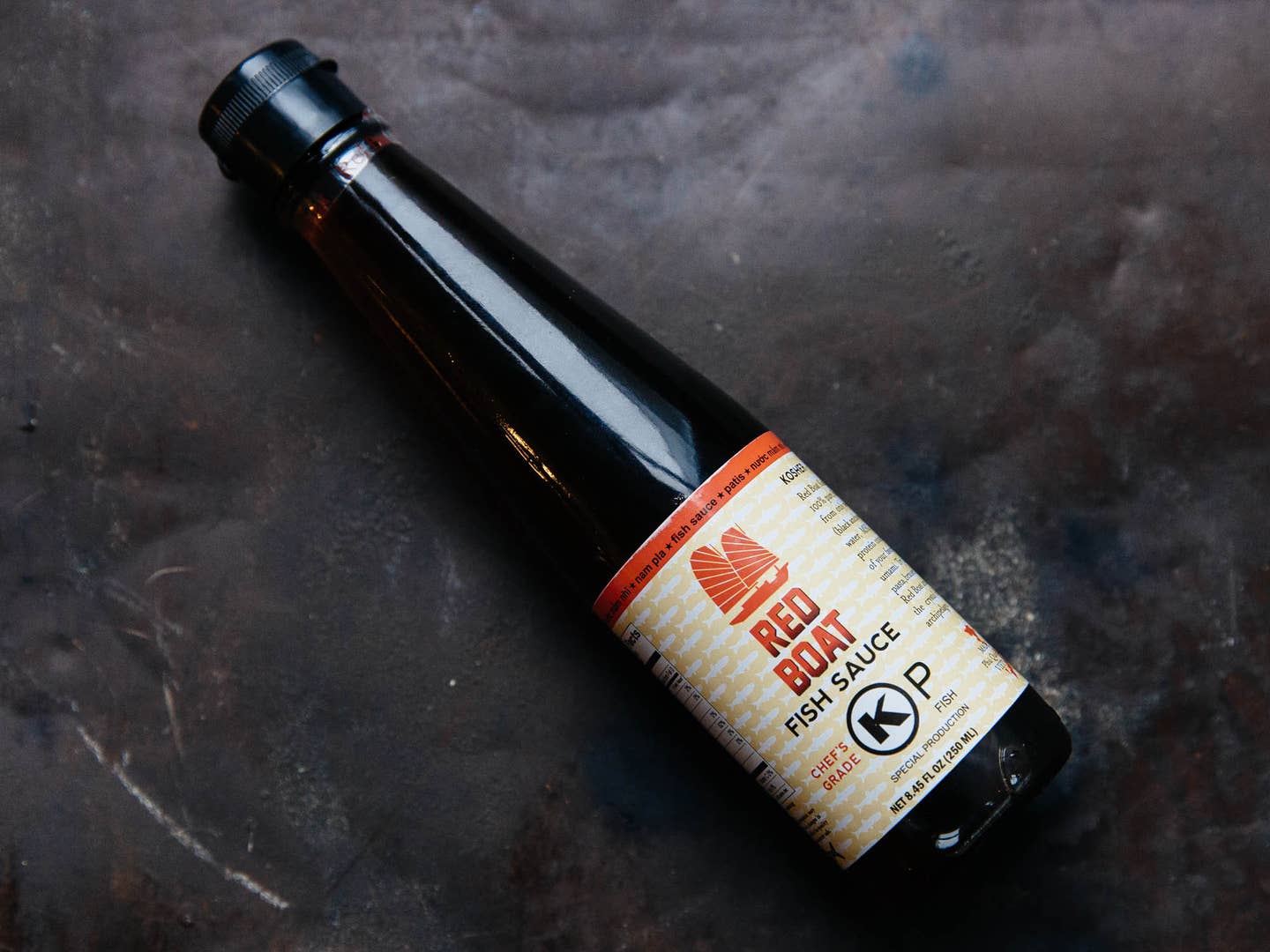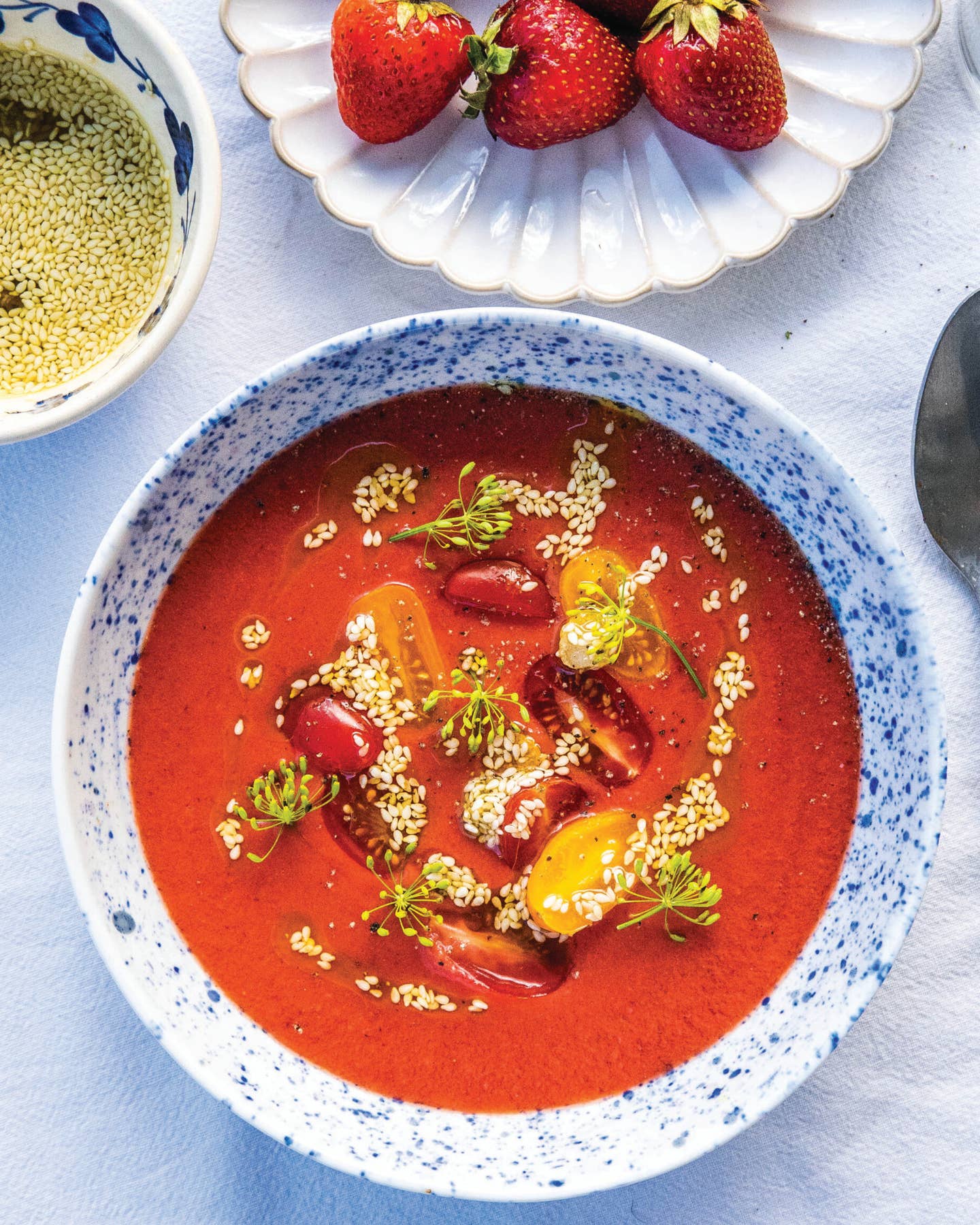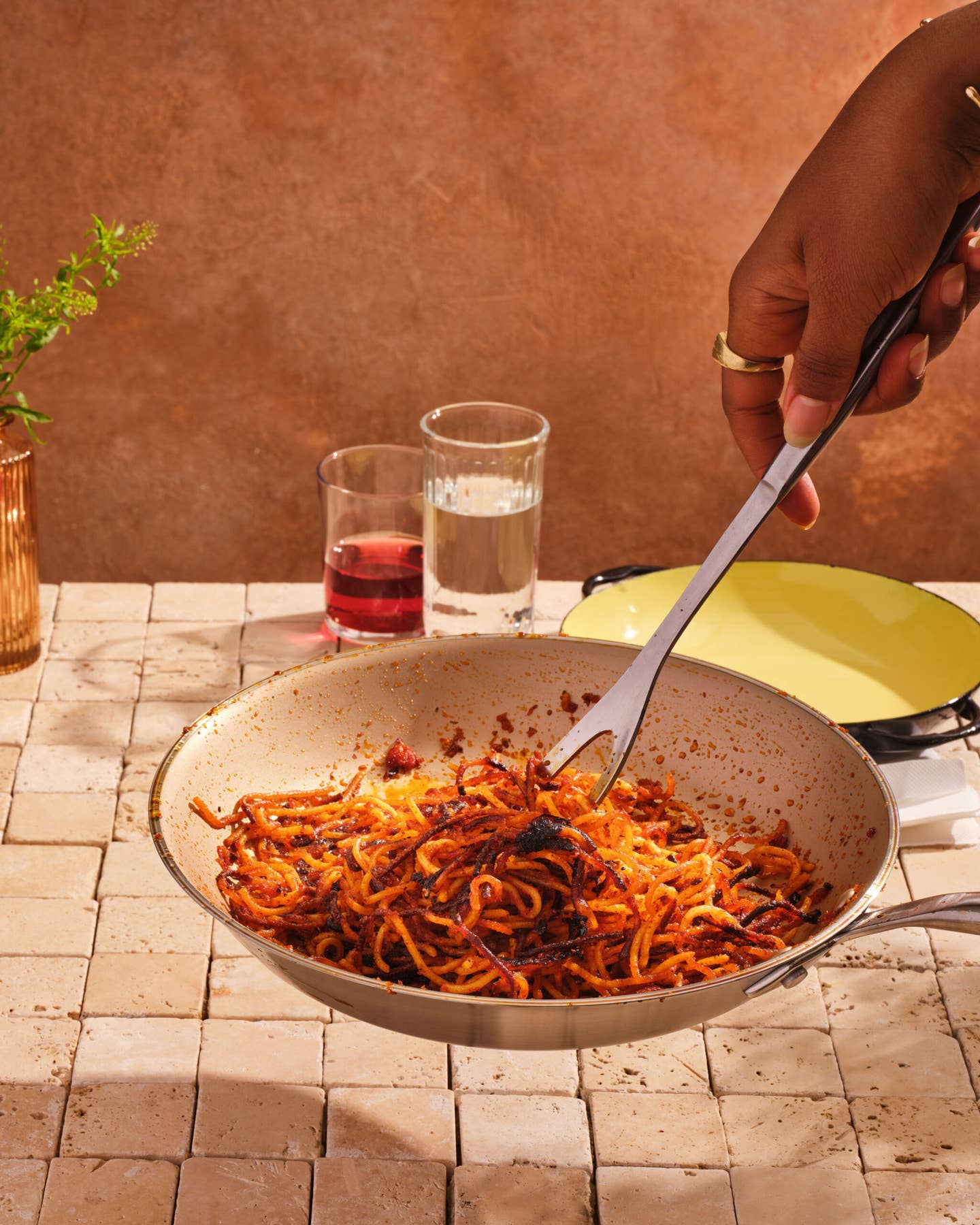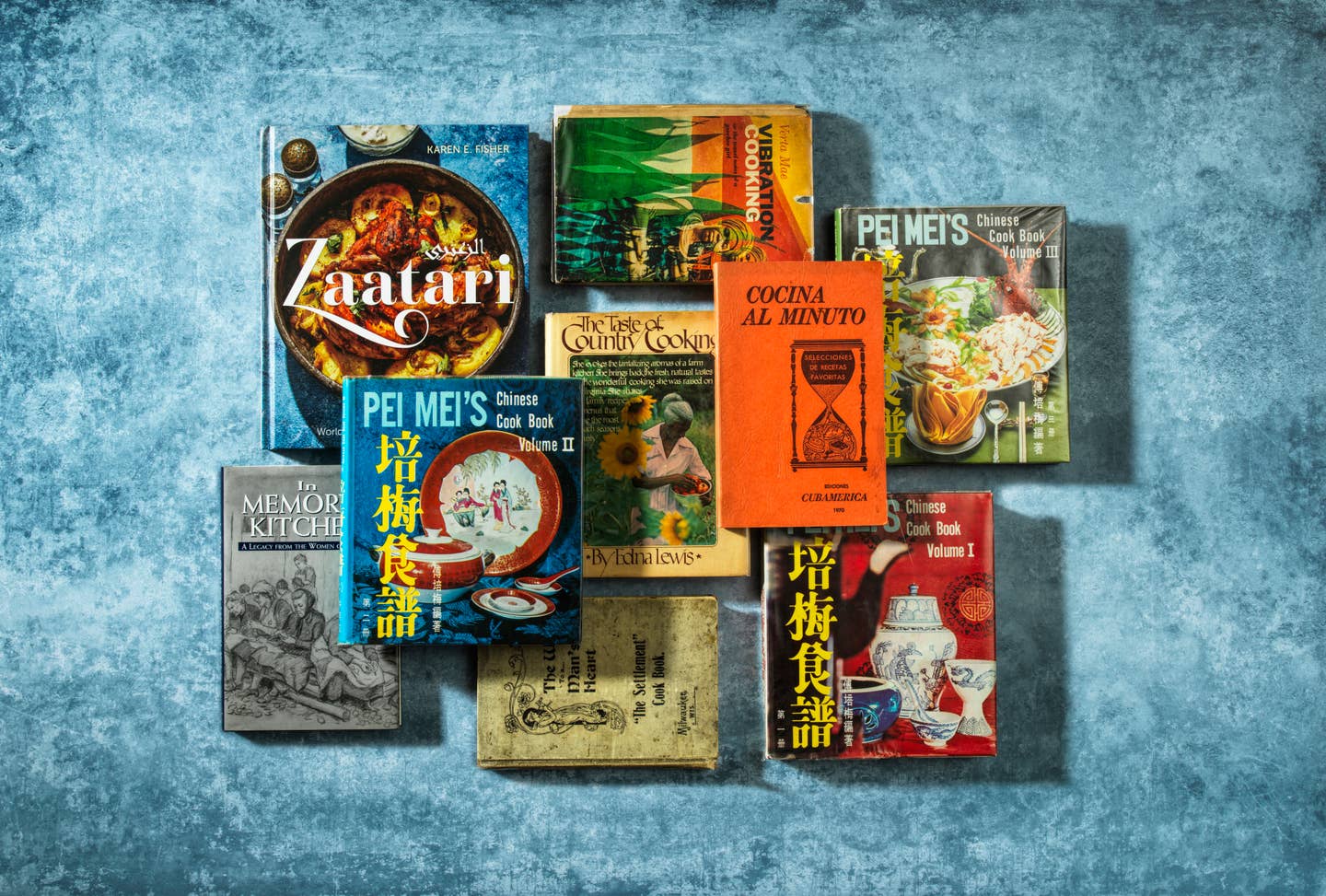
How Chefs Around America Are Pushing Southeast Asian Fish Sauce to its Limits
Get inspired with new ways to make the most of this deliciously stinky pantry staple
Growing up Asian in America, fish sauce was a near taboo topic outside of my family. Friends who came to our house would make a face when my parents told them a dish had fermented fish sauce in it, and my brown-bag lunches, with salads dressed in fish sauce “vinaigrette,” were often too smelly for the lunch room.
But attitudes towards the stuff have changed: what was once gross fish juice is now a splash of umami that everyone, chefs and consumers alike, love to love. "I use it as a flavor bump instead of salt all the time," says Chris Shepherd of Underbelly in Houston, Texas. "At Underbelly, we go through six gallons of fish sauce a week." Stephan Brezinsky of Chao Chao, a new Vietnamese restaurant in New York, echoes its ability to replace salt in most scenario, adding that it's "also great at bringing flavors to the forefront; in many cases, flavors that would be hard to perceive but that can surprise your taste buds."
Changing attitudes have also led to new products. Beyond inexpensive Southeast Asian staple brands like Squid and Three Crabs, upmarket fish sauces like Red Boat are increasingly common. Manufactured the old-school way with salted anchovies on the southern Vietnamese island of Phu Quoc, Red Boat has become a chef favorite in recent years for being a first-press, extra-virgin fish sauce offered at up to 50°N—a very high concentration of nitrogen per liter, yielding an especially intense umami flavor. The evolution of fish sauce is perhaps best seen in BLiS fish sauce: a blend of Red Boat that's been aged in bourbon barrels (yup).
"Fish sauce is liquid gold for me," says Leah Cohen, chef-owner of Southeast Asian restaurant Pig & Khao in New York. Serving Thai, Filipino, Vietnamese, and Burmese dishes, Cohen says she uses the sauce in "literally everything," from traditional dipping sauces—Vietnamese nuoc cham, Thai nahm jiim, and Filipino patis sauce—to curries and even as a butter glaze (butter, fish sauce, lime) for traditional dill-infused fish cakes.
Like many chefs, she uses a mix of Red Boat and, when recipes call for an entire bottle or more of fish sauce, the more affordable Squid brand. For finishing, however, Cohen is a fan of the barrel-aged varieties for their depth and richness. “It’s like how you have olive oil for cooking and finishing,” says Cohen. “We’ve been using only the barrel-aged fish sauce off the heat.”
Outside of its traditional home in Southeast Asian cooking, however, fish sauce proves just as versatile (it's worth mentioning that garum, the Italian version of fish sauce born in ancient Rome, has also seen an uptick in interest in kitchens). We've seen it lacquered on chicken wings, mixed into spaghetti sauce, and even in salsa verde. Ready to go? From Austin to Chicago, let the country's top chefs show you all the things, both traditional and new-school, that you can do with fish sauce.
Start With Traditional Southeast Asian Dipping Sauces
With a classic Thai nam prik or Vietnamese nuoc cham, both ideal for serving with grilled meat or raw vegetables.
Then Get Creative
Add fish sauce to anything for a dose of liquid umami. Anthony Sasso of New York's La Sirena splashes Red Boat into the miso mayo dipping sauce that accompanies a hearty patatas bravas tapa. Then there are salsas: Jonah Miller of Huertas in NYC mixes Three Crabs fish sauce with parsley, garlic, capers, olive oil, and lemon zest for the salsa verde that accompanies his radish-butter baguette toast, while Stephanie Izard of Girl & the Goat in Chicago makes an all-purpose parsley-poblano "sauce green," tempered with sambal, malt vinegar, and Red Boat fish sauce.
It can even be used in barbecue: Jedd Adair of Lamberts Downtown BBQ in Austin, Texas adds fish sauce to his spicy cilantro-and-scallion slaw, which is served with whole black Angus short rib, as well as in a spicy wings sauce.
Do Your Curry a Favor
"[Fish sauce] is extremely important in seasoning curry pastes to give saltiness and depth of flavor, just like oyster sauce and shrimp paste do," explains chef Matty Bennett of New York's Lucky Bee, where 80% of the menu contains fish sauce. Focusing on Thai cuisine, Bennett opts for Thai brands such as Megachef, another all-natural, gluten-free offering, which he uses in all curries, soups, and dressings.
At Pig & Khao, Leah Cohen similarly uses fish sauce in all of the restaurant's curries. The curry paste is fried in oil and coconut milk, then de-glazed with a whole bottle of fish sauce to season the dish and get all the browned bits off the bottom of the pot.
Improve Your Sauteed Vegetables
Fish sauce is commonly used as the primary salt in Southeast Asian veggie dishes: take for example a classic morning glory, or water spinach dish, that chef John Nguyen of Hanoi House adulterates with browned butter, minced capers, and garlic. "You can use fish sauce in place of salt and never know why exactly the dish tastes so good!" says Nguyen.
At the Michelin-starred restaurant Rouge Tomate in New York, chef Andy Bennett splashes fish sauce into a roasted asparagus, along with yuzu aioli, sesame, and peanut crumble: "I like to use fish sauce with sautéed vegetables," said Bennett. "It works really well with asparagus—get a nice hard sear on the asparagus, then hit it with fish sauce and finish it with sesame seeds."
Use it as a Pre-Fry Marinade
Fish sauce’s versatility is perhaps best seen in fried foods, where it can lend a hand not only in flavoring meats, but with the actual frying process itself. “We dip our chicken wings in fish sauce to season and create a bind for tapioca flour before frying,” says chef Matty Bennett of Lucky Bee. Bennett also cures chicken skins in fish sauce for an hour, leaving them to air dry in the fridge overnight before frying them to use as a crispy garnish in his tom yum soup.
At Smoked & Stacked in Washington DC, executive chef Marjorie Meek-Bradley's signature fried chicken thigh sandwich uses chicken, similarly marinated in fish sauce and fried, then smothered in a honey-Sriracha sauce on Ciabatta bread. Meanwhile, Ryan Lachaine of Houston's Riel prepares his alligator karaage with a marinade of fish sauce, garlic, ginger, sesame oil, palm sugar, sake and grape seed oil.
Make a Salad Worthy of the Best-Dressed Award
Traditional Southeast Asian dipping sauces are easily rejiggered as salad dressings. At Tuome in New York City, Thomas Chen cuts the stuff with lime, Thai chili, and grapeseed oil for his salad dressing, while Sang Yoon of Lukshon and Father's Office in Los Angeles, California substitutes Red Boat fish sauce for the traditional anchovy fillets in his Green Goddess and Caesar dressings.
Punch Up Your Pasta (and Pizza)
As mentioned above, Italians have a long history of using their own kind fish sauce, but a number of chefs are mixing and matching the two, or opting for the fermented Asian variety for more funk. At Pasadena's Northern Italian restaurant Union, chef Bruce Kalman laces a spicy, lemony crab spaghetti with Red Boat. "We use Red Boat for our crab pasta as it elevates all of the other flavors in the same way salt and acid enhances them," says Kalman. "Great food is all about balance, and fish sauce of any kind is a perfect balancing act."
Ryan Pera of Houston's Coltivare likewise taps into the strong connection of fish sauce to Italian, using Red Boat in a tagliatelle bolognese. "Fish sauce makes our customers ask, 'What is making this so good?' and I personally love to give them the mystery," says Pera.
Pizza also gets the fish sauce treatment: Ken Oringer of Coppa in Boston, Massachusetts seasons cauliflower with nepitella and Red Boat fish sauce for a wood-roasted cauliflower pizza. "It makes an umami bomb pizza that could not achieve the complexity without the fish sauce," says Oringer.
All Things Eggs
Traditional Vietnamese egg dishes, including scrambles and omelettes, typically use fish sauce in the eggs. Kate Williams of the soon-to-open Lady of the House in Detroit, Michigan uses it in a savory, brûléed egg custard, along with caramel, viola, nasturtium and pork cracklings: "Fish sauce does crazy cool things to eggs. I'll finish poultry brines and sauces with fish sauce for an extra punch of umami."
Pickle With Pride
"Fish sauce is great for pickling because of the high salt content," says Tom Moorman of June's All Day in Austin, Texas. "It adds a fifth flavor, and goes great with brining vinegar. It's good for any type of pickling, especially mushrooms and heartier vegetables." Moorman adds Squid brand fish sauce to his pickled mushrooms, which are served simply with hot chiles.
And Spruce Up a Bloody Mary
Now is the time to drink fish sauce: Chef Maneet Chauhan of Chauhan Ale & Masala House in Nashville, Tennessee, Maneet Chauhan says, "I make a Bloody Mary at home with a dash of fish sauce, a little bit of coconut, and some lime juice. It gives the cocktail some South Asian flair."
Keep Reading
Continue to Next Story










